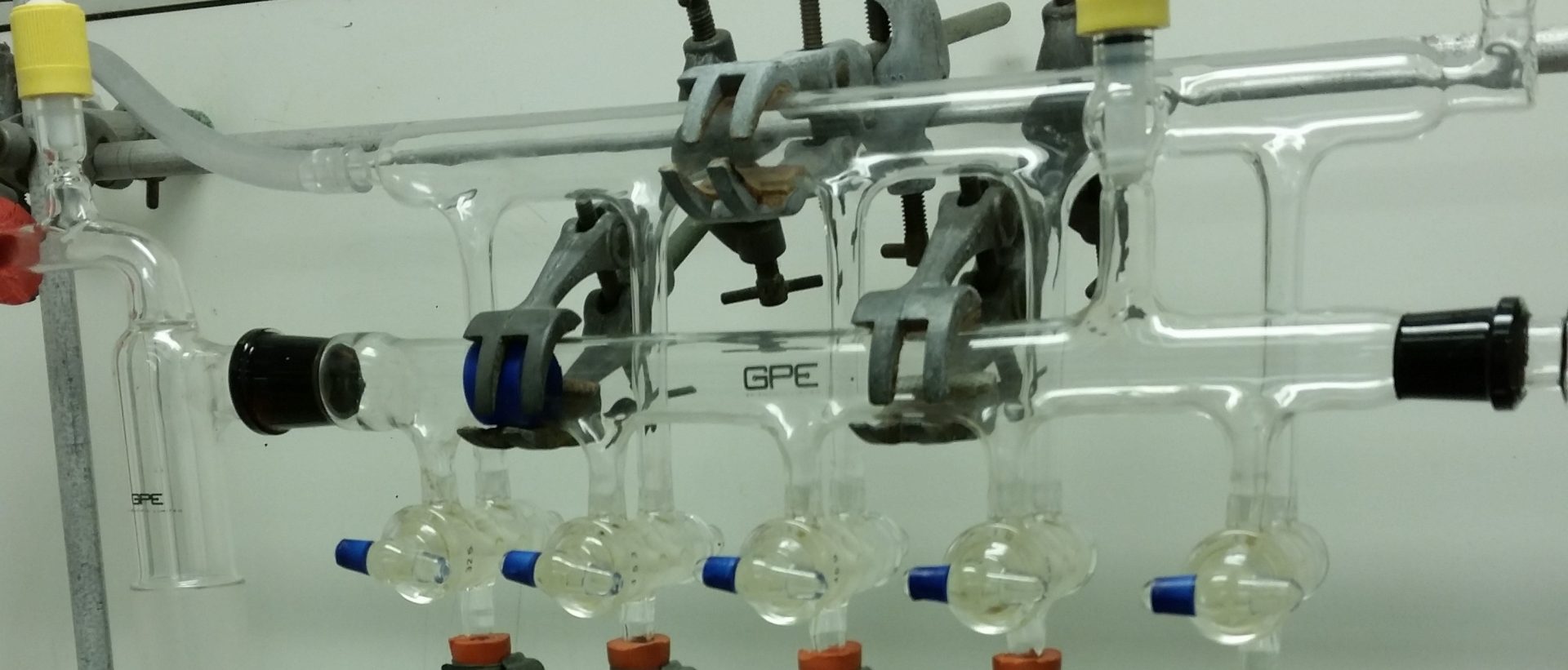Work in the Clark group focuses on uncovering and exploiting the properties, both chemical and material, of main group elements with unconventional oxidation states or charges.
Over the years, many important chemical transformations have been discovered which are driven by the properties of the transition metals: ligand-tunable Lewis acidity, well defined redox cycles, and ready access to stable open-shell configurations. Nevertheless, this chemistry is not unique to the transition metals and opening up the analogous p-block chemistry will develop not only new and complementary applications, but also show hitherto unobserved properties.
The group expertise lies in the synthesis and handling of highly reactive compounds using inert atmosphere techniques and their characterisation in both solid state and solution by diffraction and spectroscopic methods. These studies are then coupled with computational studies to derive complete structure-property relationships which in turn allow both a deeper understanding of the fundamental behaviour of the systems and form an iterative feedback loop to design and deliver compounds with tailored properties. Current research topics all involve phosphorus chemistry and include:
Pnictogen Lewis Acid Chemistry
The main group has long been a source of useful Lewis acids, of which species like BF3, AlCl3 and SbF5 are perhaps the best known. Since the discovery of Frustrated Lewis Pair chemistry and metal free hydrogenation catalysis, a great deal of work has gone in to designing new Lewis acids, and cationic species from across the main group have been used where the positive charge enhances the Lewis acidity. The majority of this work has focused on main group metals in their highest oxidation states, (e.g. P(V) species for phosphorus) and we have turned our attention to phosphenium cations – formally two-coordinate P(III) cations whose voracious Lewis acidity has been known for centuries and which typically require solvation by a Lewis base to allow their isolation. We are currently exploring the limits of their reactivity for applications including: small molecule activation, catalytic transfer hydrogenation, and hard-anion selective sensors.
Pnictogen Radicals
Stable, neutral main-group radicals have been known for many years, dating back to 1900 when Gomberg first isolated and identified the C(III) radical which now bears his name. Since then, many more classes have been discovered but these are primarily derived from the top right of the periodic table, using the lighter elements. As the periodic table is descended, the number of radicals falls off dramatically, and there are only a handful of structurally characterised phosphorus radicals known. Incorporating heavier elements into radical systems has a dramatic effect on their properties, as the more radially diffuse orbitals of the heavier element allow a greater array of interactions in the solid state or in aggregated species. Work is focused on developing new P(II) and P(IV) radicals, and their heavier congeners, both as materials in their own right and for use as ligands to transition metals to generate clusters with combined metal-radical magnetic properties.
New Routes to Phosphorus-Carbon Bonds
Despite the ubiquity of phosphorus in synthesis, biology and catalysis, most phosphorus compounds are still made using the same basic technique – reaction of an organolithium or organomagnesium species with a phosphorus electrophile which is itself ultimately derived from PCl3 or PCl5. Whilst the utility of this route is undeniable, its downsides are likewise – lack of available starting materials, functional group incompatibility and of course the hazards of working with hard organometallic reagents. We are therefore investigating alternative routes to these compounds, in particular enhancing the electrophilicity of phosphorus-containing precursors and also lithium-free routes to soft, environmentally benign organometallic nucleophiles.
Other Projects
As well as these, we collaborate with a number of other research groups working on magnetic coordination frameworks, Chemical Warfare Agent decontamination, and fluorescent sensors for biomedical applications.
This work involves both air-stable and inert atmosphere synthetic chemistry, working with reactive gases, multinuclear NMR spectroscopy, EPR spectroscopy, magnetometry, X-ray diffraction, fluorescence studies, computational chemistry, cyclic voltametry and more.
